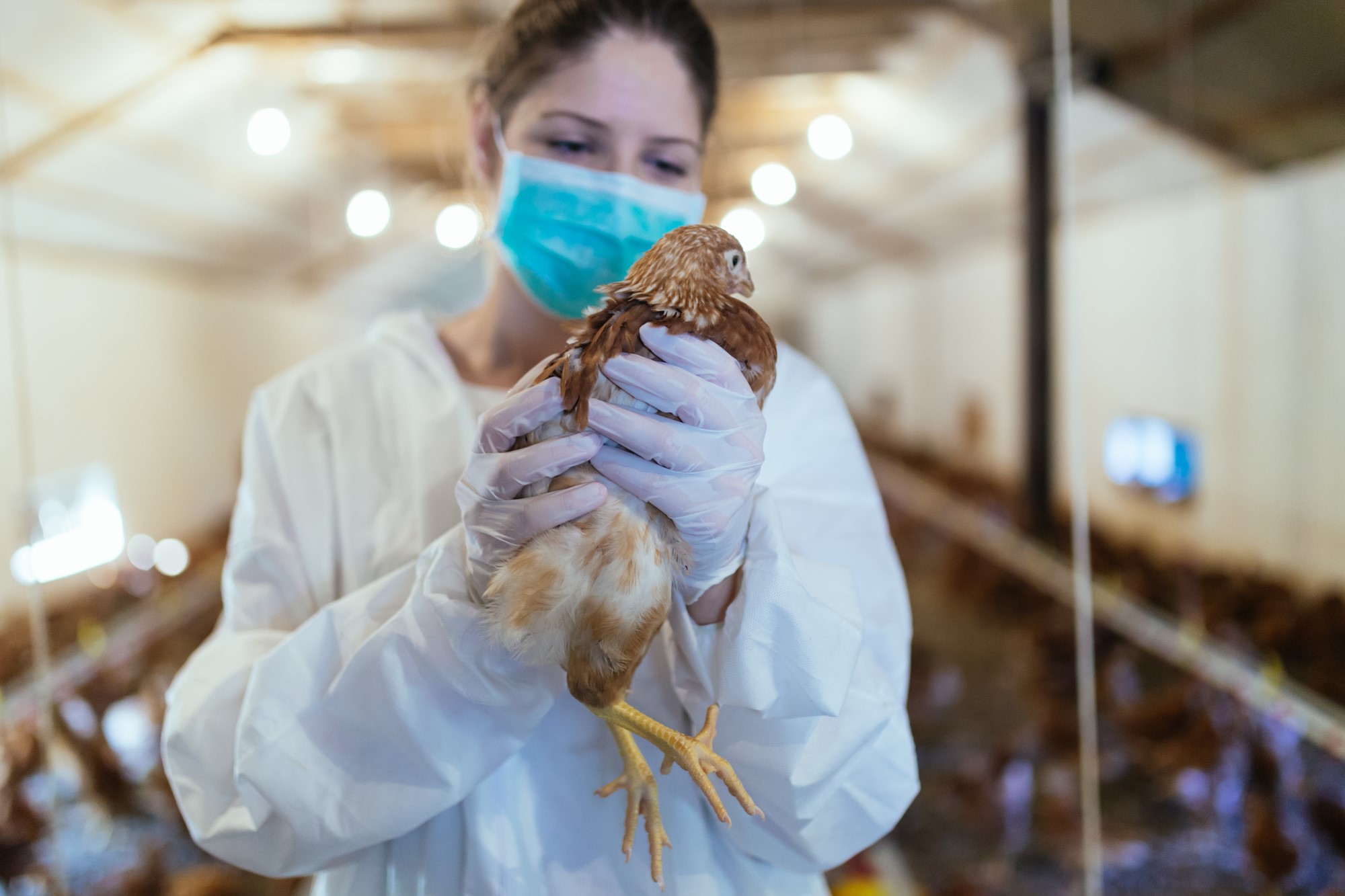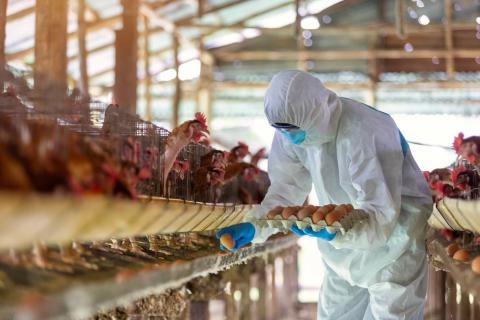What has happened?
The National Microbiology Centre has found the first positive H5N1 avian influenza virus in a human being in Spain, according to Animal's Health. It is a worker on a farm located in the province of Guadalajara (Castilla-La Mancha) who was suffering from an outbreak among poultry. The positive result was detected during the active surveillance tasks to which the staff of these places are subjected. Confirmation came on 27 September and the sample was from the 23rd. The patient remained asymptomatic until testing negative on the 28th, and no further cases have been found among other staff.
What is this H5N1 influenza?
Influenzavirus A subtype H5N1 is an influenza virus that causes a highly contagious and severe disease in birds, commonly known as "bird flu". The numbers in the name refer to two proteins on the surface of the virus, haemagglutinin (H) and neuraminidase (N), which are used to classify influenza subtypes.
Avian influenza is further divided into two types: highly pathogenic and low pathogenic (HPAI and LPAI, respectively). HPAI is the greatest threat to birds and poultry industries because of the high mortality it causes in animals, and is the one detected in this case.
Why is it important that a person has tested positive in Spain?
This is the first person in Spain to have tested positive for H5N1 influenza. It is also the second case in Europe: the first was in the UK in January 2022. They are not the only countries to have found their first case this year: the United States did so in April.
Human cases are rare, but the mortality rate can be as high as 60%, according to the WHO. So far it does not transmit well from person to person and almost all cases so far have occurred in people exposed to infected birds, such as farm workers. However, its high lethality, coupled with the fact that in recent years there has been an explosion of cases in people and birds, has experts worried that the virus may mutate to become more contagious.
Where did it come from?
The so-called "poultry plague" has been known since the late 19th century, but H5N1 flu was found in a goose in China in 1996. It was to change everything: in 1997 it was found to be able to jump between species. It infected 18 people in Hong Kong, a third of whom died. In 2003 it reappeared in Asia and since 2005 it has been spreading and causing outbreaks among wild and domestic birds around the world.
The current strain of H5N1 was detected in 2021 and since then has killed nearly 90 million birds based on US and European data alone, mostly due to culling of domestic birds to try to control outbreaks.
Spain, UK, USA... Why now?
In recent years there has been a pandemic of H5N1 avian influenza in various parts of the world, resulting in the culling of millions of animals and huge economic losses. The European Food Safety Authority (EFSA) listed the 2021-2022 avian influenza season as the largest ever recorded in Europe, with more than 5,000 cases in 36 countries.
There were more cases in 2021 than in the previous five years combined, according to World Organisation for Animal Health data provided to The Telegraph. This was 462% more cases and 150% more deaths in birds compared to 2020. With these figures it is not surprising that the virus has more opportunities to jump to a human host.
Just this week, the ECDC shared new data on the 2021-2022 season: 2467 outbreaks in poultry, 48 million animals culled in Europe and 37 countries affected.
And why Spain?
Spain is highly vulnerable to avian influenza as a destination for more than 1.5 million wintering migratory waterfowl from infected countries. "The susceptible population of wild and domestic birds in Spain is very high, and the potential economic impact is high given that the Spanish poultry sector ranks second in livestock production," explained two researchers from the Centro de Investigación en Sanidad Animal (CISA) in an article published in the Science Media Centre España that analysed the unprecedented wave faced by our country this year.
There have been millions of cases in birds, but what about humans?
According to the WHO, between 2003 and 31 March 2022, there have been 864 cases of influenza A H5N1 in humans, of which 456 died (a case fatality rate of 52%).
It is not transmitted from person to person and the risk lies with those in contact with poultry. Can I get infected if I eat chicken?
It is not possible to become infected by eating cooked meat. Viruses depend on a living organism to survive, so they start to disappear as soon as their host dies. In the unlikely event that supermarket-bought chicken still has viable viruses, they will be destroyed during cooking. It is important to maintain good hygienic practices when handling meat and cooking it well, but the reasons for this go far beyond H5N1.
According to the WHO, "a large number" of human infections have been linked to the slaughter and handling of infected poultry at home before cooking. While this is not a problem for most people in developed countries, who shop at the supermarket, these are the highest risk practices and the ones to avoid the most.
Do I have to worry about another pandemic?
"The increased incidence in recent epidemics makes these viruses a threat to public health. This, and the fact that they are viruses with a high mutation rate, makes it necessary to maintain constant vigilance in both birds and humans," warned CISA researchers Irene Iglesias and Ana de la Torre in their paper.
Detections of H5N1 influenza in humans should not worry the general population for the time being, but should remind us that avoiding the next pandemic requires active surveillance, effort, research and investment.




